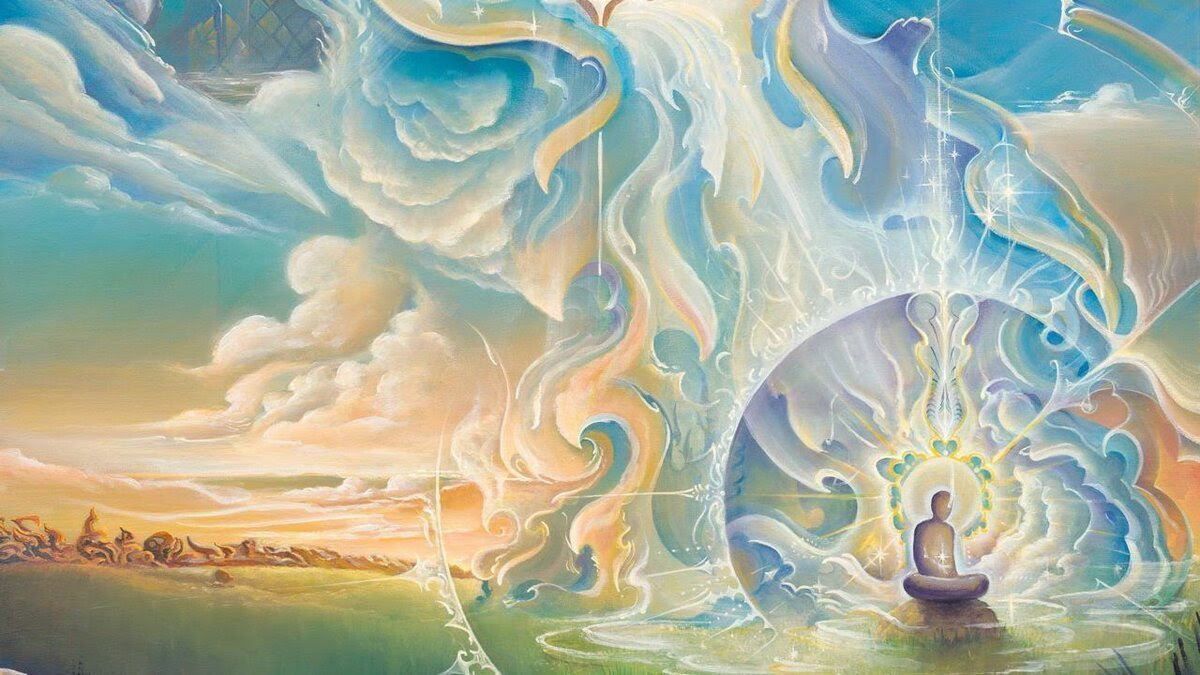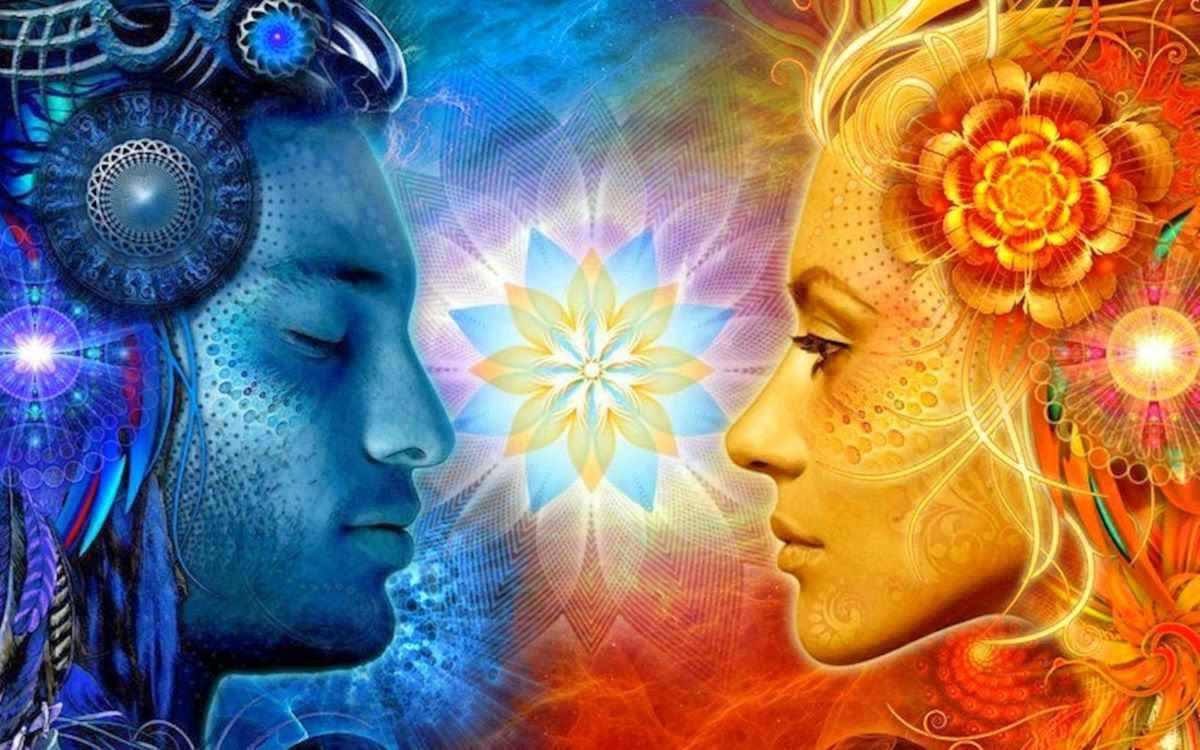 |
Quantum physics cannot be considered without connection with consciousness.
Back in the first half of the last century, Carl Jung (psychologist and founder of analytical psychology) and Wolfgang Pauli (physicist, Nobel Prize winner, one of the pioneers of quantum mechanics) were convinced that the laws of physics and consciousness should be considered as complementary.
At present, quantum physics is revealing something that we have long forgotten about ourselves: at the quantum level, REALITY IS SUBJECT TO HUMANS.
No matter how you hide the truth, it still sprouts with divine knowledge, just as eternal life breaks through the cracks of asphalt and concrete roads with the greenery of sprouted blades of grass. Asphalt and concrete are called upon to cover the living earth with an insensible bark, standing between man and Mother Earth, to isolate people from their source of power.
 |
We have forgotten the last time we walked barefoot on the grass and wandered along the forest paths. The custom of walking on the living earth, receiving life-giving force from it, has disappeared.
We have lost the habit of sitting on the ground under a tree, leaning our backs against its trunk. We do not look at the sky at all, we do not admire the picturesque and unique beauty of the clouds floating on it and the play of the sun in them at dawn and before sunset.
We are accustomed, walking along the streets, to look at our feet, without hearing the chirping of birds, without dissolving our souls in the colors of the sky, without being touched by the modesty of the blades of grass and the quivering of the trees.
WE PASS OUR LIVES.
It happens because we live in turmoil. It is a way of life purposefully formed in the human community. It leaves neither time nor energy to look around and see the LIVING WORLD OF NATURE, to feel the LIVING THOUGHTS OF GOD. It is in them that the truth can be found. To know the truth means to be free.
 |
There are five famous quantum experiments that confirm the special role of the mind of the observer in quantum mechanics. Let's look at three main experiments.
1. The first experiment with electron diffraction. Diffraction is the rounding of obstacles by waves. The experiment was carried out in 1961 by Klaus Jenson and, according to a survey of leading physicists, was named one of the most beautiful in the history of science.
Between the source of electrons, the flow of electrons, and the screen to which they are directed, an obstacle is installed in the form of a copper plate with two parallel vertical slots. The electrons must overcome the obstacle by passing through the slots and, having reached the screen, light up there on the film.
Electrons are the elementary particles. According to the canons of classical physics, they must pass through the slots and appear on the film directly opposite the slots in the form of two parallel vertical stripes. This was the expected result. But in fact, when passing through the slots, the electrons behaved not like particles, but like waves. And they lit up on the screen in a complex pattern of alternating black and white stripes.
It turned out that an elementary particle can be both a particle and a wave at the same time. Moreover, one electron could pass through two slots at the same time. Then physicists decided to record the behavior of electrons with the help of instruments, and the instrument, as you know, is controlled by a person. Under the gaze of an observing experimenter who expected to see the familiar classical picture, the electrons obediently obeyed his will. They gracefully passed through the obstacle and gave the expected result.
There is really nothing surprising, because observing is not just looking at something outside, but expecting some result. This is an active process of influence of consciousness.
TO HAVE HUMAN CONSCIOUSNESS MEANS TO CREATE.
 |
2. The second experiment was carried out by the group of Professor Schwabe from the USA. Under the focused attention of the observer, a tiny aluminum strip changed its physical characteristics.
3. The third experiment was published in 2006 by the group of Nobel laureate in physics Wolfgang Ketterle of the Massachusetts Institute of Technology. It was recorded that, under the gaze of an observer, the average lifetime of decaying unstable particles, in particular, rubidium, was extended 30 times.
In the 1960s and 1970s, there was a rapid development of elementary particle physics. When more than 350 of them were discovered along with antiparticles, it became possible to assume that scientists, in fact, do not discover, but create them under the close attention of their creative consciousness.
EVERYTHING OUR CONSCIOUSNESS FOCUSED ON BECOMES REALITY IN THE VISIBLE WORLD.
The world is a mirror of our thoughts.
I am what I think.
I see what I think.
I am what I see.
The world is reacting to us. We are shaping it. And this happens regardless of whether we want it or not. To be human means to create being.
TO BE A HUMAN IS TO BE A CREATOR AND TO HAVE UNLIMITED ABILITIES.
 |
Abilities that our distant ancestors freely, dignifiedly and joyfully owned in the Figurative period 10 thousand years ago. Approximately at this time and even a little earlier, as a result of manipulations on the human psyche by the secret Team, people began to appear in Europe, Asia, North Africa and the Caucasus, whose connection with God was partially or completely dulled. It is from this period that the movement of mankind towards a catastrophe begins.
And, nevertheless, the way of life of the original sources was preserved for another 5 thousand years on the territory that is now determined by the borders of such states as Russia, Ukraine, Belarus, England, Germany, France, India, China, and many others. The people, worthy of calling themselves VEDRUS, happily lived in the expanses from the Mediterranean and Black Seas to the extreme northern latitudes. This people are ourselves.
"We - Asians, Europeans, Russians, and those who recently called themselves Americans - are actually people-gods from the same Vedrus civilization" (V. Megre, "The Book of Kin").
Author: Milena Bozhenova
 |





